|
One of the important themes in my newest novel Bridgers 4 is the ability of certain creatures to control the minds and behaviors of other creatures. In Bridgers 4, certain creatures can control even humans (you must read the book to get the bizarre and frightening details). I've selected an Awesome Animal that is notorious for this ability—the parasitic wasp. Actually, I should have featured these wasps closer to Halloween because they are kind of creepy. But, they're also absolutely fascinating. So, what the heck is a Parasitic Wasp? What I am referring to here is a family of wasps, called Ichneumonidae. Astoundingly, the ichneumonid (pronounced ick-noo-mon-id) wasps include over 60,000 species worldwide. Usually, when we think of wasps, we think of those nasty stingers. But the stingers of ichneumonid wasps have been modified to be ovipositors—a structure for laying eggs. And here is the fascinating (and creepy) part: they lay their eggs inside or on other creatures. Then their larvae, which are carnivorous, eat the host creature. And sometimes, the larvae actually control the behavior of the host, forcing it to do things that benefit the larvae. Below is an ichneumonid wasp laying its eggs in cabbage-eating caterpillars. Amazing facts about Parasitic Wasps First, I should point out that these wasps do not exactly fit the definition of parasite. Parasites (like ticks or tapeworms) rarely kill their hosts whereas these wasps almost always kill their hosts (the larvae consume the host creature). A more appropriate term is parasitoid. But I didn't want the title of this email to be too confusing, so I used the more familiar term. So, ichneumonid wasps are actually parasitoids. In Bridgers 4, Desmond, Lenny, and Xavier discuss an ichneumonid wasp that controls the behavior of orb-weaver spiders, so I'll begin with that amazing example. In the Central American tropics, there is a wasp that seeks out an orb-weaving spider, grabs the spider, and lays a single egg on the spider's abdomen. When the egg hatches, the worm-like larva attaches to the spider's abdomen and then starts sucking the spider's fluids out to say alive. See the larva attached to the orb-weaving spider below: For a while, this doesn't seem to affect the spider. But when the wasp larva gets to a certain size, it injects a chemical that changes the spider's behavior. The spider stops making its normal, symmetrical web it uses for catching insects. Instead, it makes a very specific type of web, one that is much stronger and that is perfect for safely holding the wasp larva's cocoon. When the spider finishes the new web, the larva kills and eats the spider. The wasp larva then creates its cocoon on this nice, custom-designed web. Check out this video about this wasp that forces spiders to weave a different web. The photo below on the left is the spider's normal web, and on the right is the web the wasp forces the spider to weave: The web on the right is stronger, requiring 2.7 to 40 times more force to snap the strands, compared to the normal web on the left. This makes the web more suitable for holding the wasp's cocoon. Also, the web on the right glows brightly when looked at under ultraviolet light, whereas the one on the left doesn't. This prevents insects and birds from accidentally flying into the web, again making it safer for the wasp's cocoon. Researchers believe the wasp larvae inject their spider hosts with chemicals that mimic hormones the spiders produce naturally to trigger them to build resting webs. And then slight modifications to the chemicals could force the spiders to go over the same spots to reinforce the web and to add the extra UV visibility. What an amazing example of mind-control! It's like something from a science fiction story, right? Oh wait... I actually use this concept in Bridgers 4. But wait, there's more! There are many, many examples of wasps that can change the behavior of their hosts, essentially turning them into zombie slaves. Another example is the emerald wasp and its much-larger victim, the common household cockroach. The wasp stings the cockroach in a very precise spot of the roach's brain, injecting mind-controlling venom. The cockroach suddenly loses its ability to initiate its own movement. The wasp grabs the cockroach's antenna and leads it to a special chamber. The cockroach follows along, unable to resist, making it much easier for the wasp to take the larger victim to its doom. Once it leads the cockroach to the chamber, the wasp lays a single egg on the roach and then seals up the chamber with pebbles. The wasp larva hatches out, burrows into the cockroach, and then eats the cockroach from the inside. I know... gross and creepy. But so cool! Hmm... I wonder where Ridley Scott got the idea for the alien larvae for his 1979 film, Alien. Below is the emerald wasp with its unfortunate victim: Okay, can you handle one more example without having nightmares? There is a wasp called the Ladybird Parasite. The adult females of this wasp seek out adult female ladybird beetles. The wasp lays a single egg on the beetle's belly. After about a week, the wasp larva hatches. It already has wicked mandibles, and it proceeds to remove any beetle larvae or eggs, and then it enters the beetle's body and starts feeding on the beetle's insides. The beetle goes about its business for almost a month while the wasp larva feeds within it. When the wasp larva is ready to emerge, it paralyzes the beetle first. It then tunnels out and forms a cocoon attached to the beetle's belly. The wasp in the cocoon develops beneath the ladybird beetle. Why? Well, ladybird beetles are brightly colored to scare away potential predators (the beetles secrete a nasty tasting chemical). And so the paralyzed beetle becomes the developing wasp's zombie bodyguard. The beetle even twitches its legs regularly, which helps to scare predators away. The photo below shows these zombie bodyguards with wasp cocoons beneath them. I wish I could go on and on about animals that control the minds of other animals. There are even examples of parasitic fungi that do this! But, those will have to be topics for future Awesome Animal emails. Well... maybe in the next email I should feature an animal that is cute and cuddly? So, the Parasitic Wasp deserves a place in the F.A.H.O.F. (Formidable Animal Hall of Fame). FUN FACT: The word formidable has been around since the early 1400s. It has several meanings, such as causing apprehension or dread, of awesome strength, and arousing feelings of awe because of grandeur or strength. Due to creepiness and horrifying habits of parasitic wasps, I thought this word was a good choice today. So, formidable is another way to say awesome! Photo Credits:
Wasp laying eggs in cabbage-eating caterpillar - Phys.org Wasp larva on orb-weaving soider - NY Times Orb-weaver web comparison - Smithsonian Insider Emerald Wasp and cockroach - Deven Dadhawala on Flickr Lady beetles carrying wasp cocoons - BBC
2 Comments
|
Stan's Cogitations
Everyone needs a creative outlet. That's why I write. Archives
July 2024
|

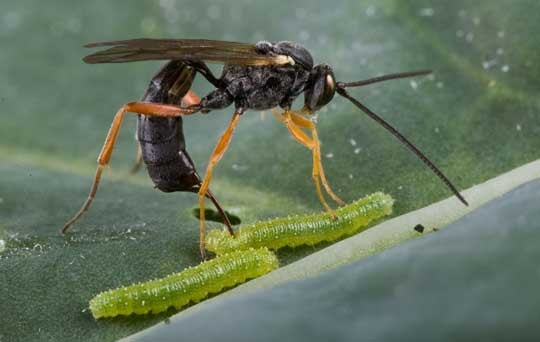
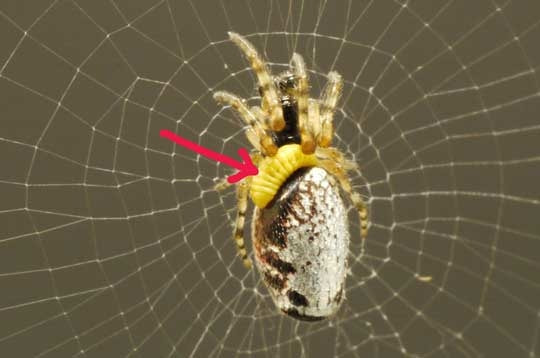
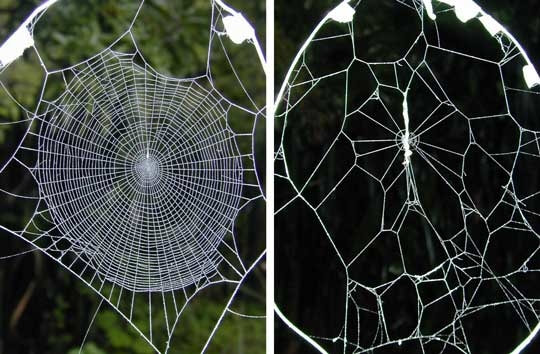
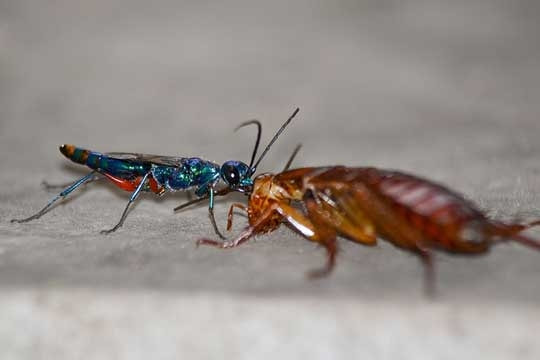
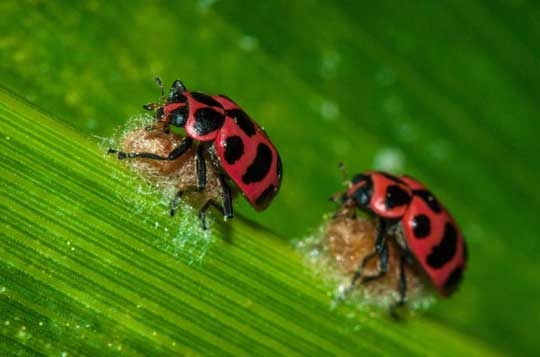
 RSS Feed
RSS Feed